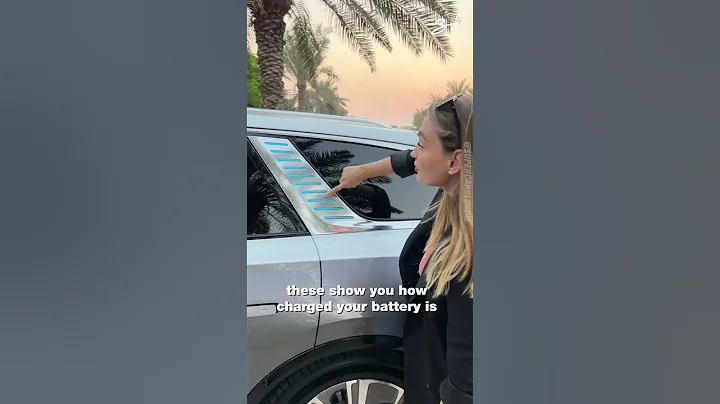#The super-powered
Since this year, Snail Car Zhi's test drive review has significantly moved to the field of new energy vehicle . In the past two years, with the deepening of technology and popularization of the market, the products and technical directions of new energy vehicle companies have gradually become clear. Where are their respective wins? What aspects are the best at playing in the same level? Let’s take a look together!
Domestic new energy vehicles intelligent driving assistance has the strongest comprehensive strength
Representative models: Xiaopeng P5
First of all, it is the most popular intelligent driving system. Although every family claims to reach L2 or even L2+ levels, we have more test drives, and the difference is still obvious. If it was two years ago, I think the strongest one is Tesla , but this year it may not be. After all, the new domestic forces have worked harder in the past two years.

Then I personally think the strongest comprehensive one at present should be Xiaopeng . First of all, in terms of the ratio of R&D funds and resource investment, Xiaopeng has always been one of the most focused areas, and only when it is invested can it produce. Judging from the performance of L2+ driving assistance in our previous test drives and evaluations, Xiaopeng is very eye-catching and is very decisive in handling emergencies. Expert, you don’t have many manual interventions in the process, and there is the “old driver sense” that others say.

and higher-level intelligent navigation, which is what netizens call "full autonomous driving". Currently, the map has been officially equipped with mass-produced cars and is on the road. There are Xiaopeng's NGP and Huawei NCA. I have tried both in-depth and are very powerful, but Huawei NCA still has a sense of ambiguousness and hesitation under certain complex road conditions.

In addition, we look at the manufacturer's strength in intelligence driving. We cannot just compete with hardware and chip computing power. The more important thing is the algorithm. Previously, Xiaopeng P5 P version had only TOPS computing power of about 40, and it could already achieve full NGP computing, which is indeed not simple.
The strongest domestic new energy vehicle system
represents the model: M5
vehicle system, or smart equipment in the car, I have to vote for Huawei. After all, a company that builds mobile phones and tablets. To compete with car companies is equivalent to a dimensional reduction blow.

Although the new forces have complete functions, they are very dazzling, and there are all kinds of gimmicks. But I only have one standard. Can you be as smooth and easy to use as your phone? The closest I've tried is Huawei. Its car and central control really make you feel that you are operating a Huawei large tablet, which is very easy to use, and has no learning cost, so it's easy to get started. The other is Huawei's "Internet of Everything" Hongmeng system. If you use Huawei's other electronic equipment, mobile phones, tablets, notebooks, or watches like me, then the feeling of interconnecting with the car computer is really wonderful.

The strongest battery of domestic new energy vehicles
Representative models: BYD Qin PLUS DM-i, Geely Emgrand L Thor Hi·P
Although the ternary lithium battery of CATL has the largest sales volume. However, it is not a car company, but only a handful of car companies that can build batteries. I think the strongest one should be BYD .

This is not only because it was used to build batteries before it built cars, but also has always achieved self-sufficiency in automotive batteries. The most important thing is that the blade battery , which BYD currently promotes, is indeed not simple. Through the optimization of structure and design, the volume and total weight of the lithium iron phosphate battery system can be similar to that of the ternary lithium battery, so that cars equipped with lithium iron phosphate can also have a range of more than 600 kilometers. what does that mean? Replacing ternary lithium batteries with it can not only improve the safety of the car, but also reduce the price and cost of the car. Moreover, from the perspective of national strategy, cobalt and nickel required for mass production of ternary lithium batteries can be saved, which are strategic resources that my country lacks very little.

After talking about the core technology of electric vehicles, let alone hybrid vehicles, domestic cars basically specialize in plug-in hybrid technology tree, and plug-in hybrid is more in line with the national conditions. So who is stronger? From a market perspective, the most popular one is BYD's DM-i technology, which is hard to find.But from a technical point of view, DM-i is actually not complicated, and because the engine can actually intervene in direct drive in addition to power generation, it cannot be said to be the best solution. Whether it is the Thor Hi.P system of Geely , or the Kunpeng DHT of Chery , because they all have a 3-level gearbox, the engine and electric motor are more closely combined and the driving mode is richer, so I think it will be better. Compared with the two, I chose Geely's Thor system. It is more mature, has a large market share, and has experienced more market verification.

or above only represents my personal opinion. I do not agree, welcome to leave a message.











